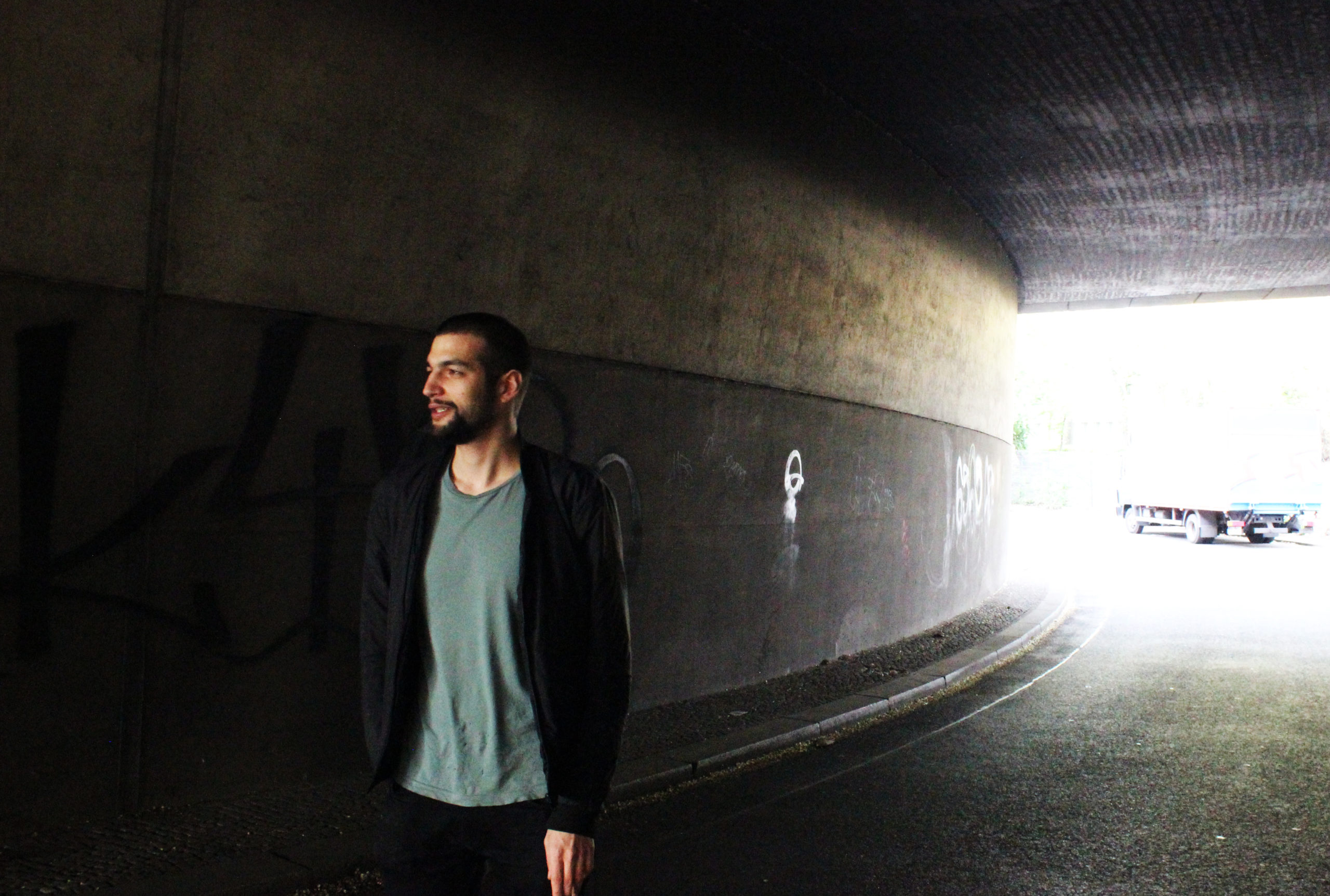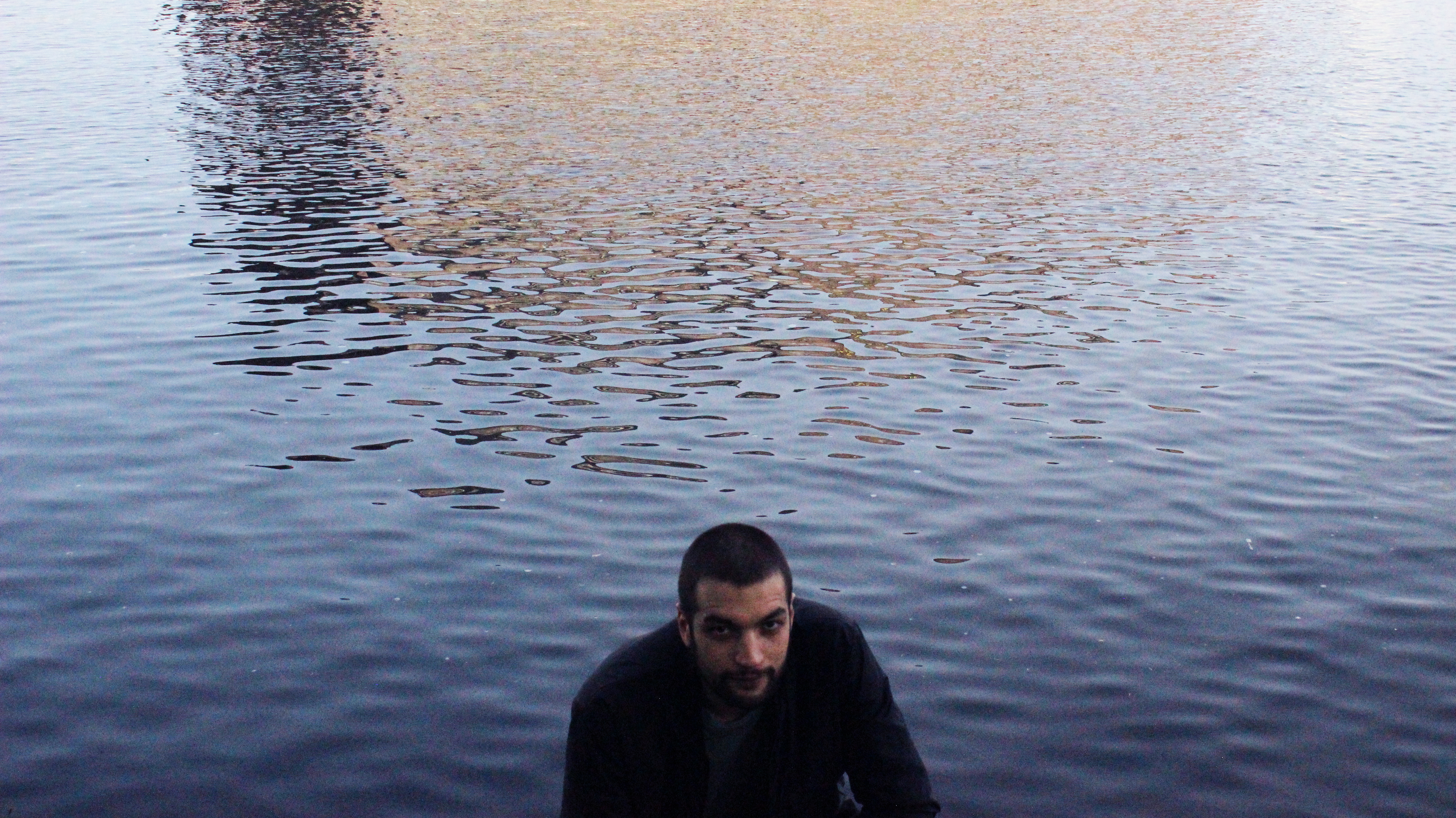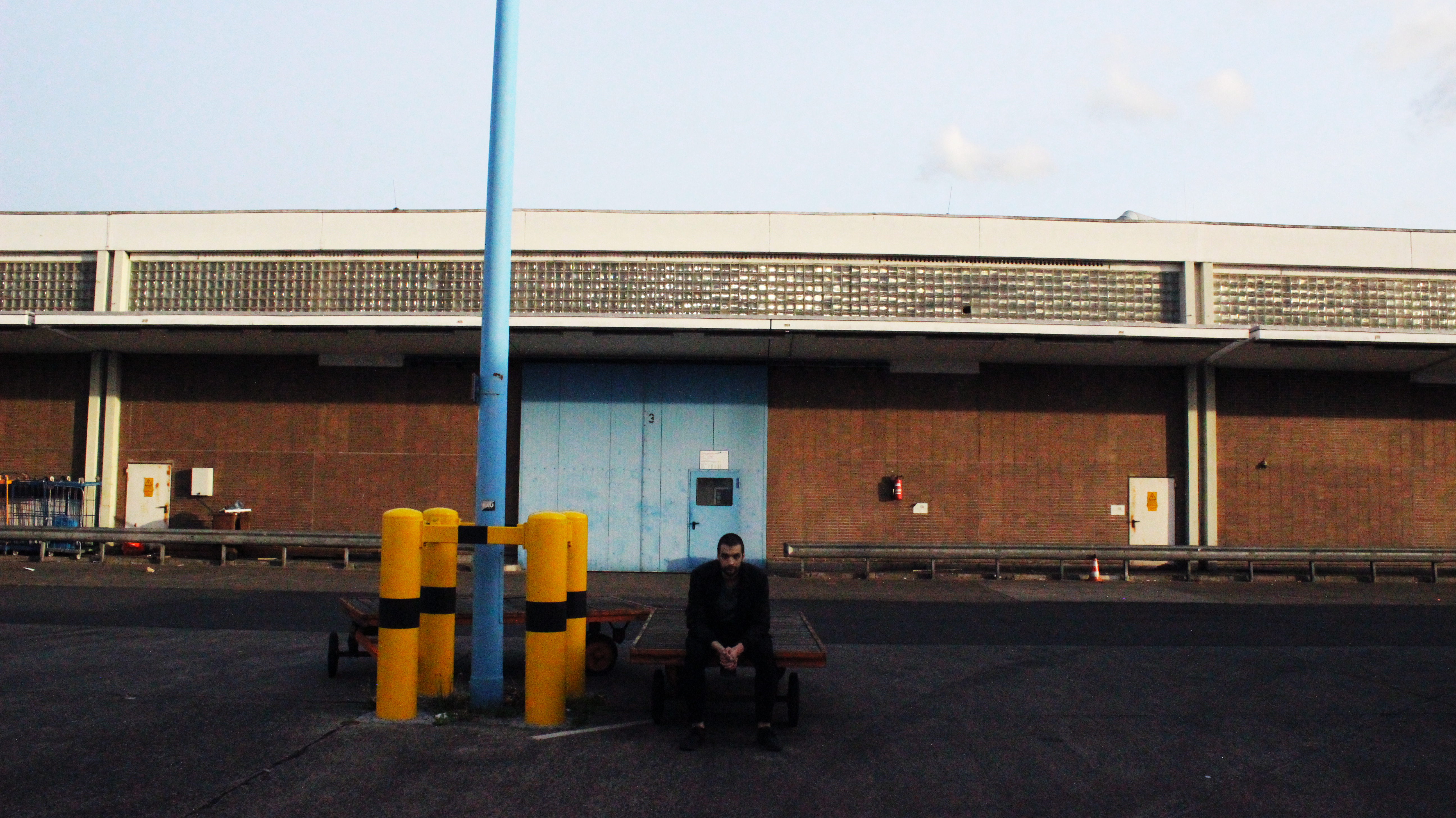Bubblin’ Up: smog
Academic experimentation from Paris.

Bubblin’ Up: smog
Academic experimentation from Paris.
Paolo Combes is a busy man. The French artist, a resident of Berlin for five years, divides much of his time in three ways: studying Audio Technology at the Berlin Institute of Technology; working as a sound technician; and producing music as smog, a project he started in and very much inspired by his relocation to the German capital. Earlier this year, he released his debut album, sequel’70, available now via oqko, a collective-cum-label he runs with some friends. It’s no surprise that he finds himself having less time to sample Berlin’s musical delights.
Divided perhaps, but Combes’ endeavours very much inform one another. He found his way into electronic music through hip-hop, starting out by making beats for his Parisian friends, before drifting into more traditional house and techno as he started to discover nightlife. It was around this time that he began to develop an interest in the academic side of music, electro-acoustic artists like Richard Devine, Daphne Oram, and Delia Derbyshire, and these practises underpinned his earliest techno outings, beginning around 2015 as the smog project was just taking shape. “Academic research opened me to a broader sense of experimentation, and allowed me to connect abstract and club music together,” he explains.
smog can be seen as a crystallisation of these ideas. His work, which has been picked up by the likes of Donato Dozzy and Objekt, blends breakneck industrial sounds with the belligerent power of hardcore techno and abstracted percussion of UK dance music. At its root are carefully researched electro-acoustic techniques blended with digital and analogue processing, used to shape his ideas into warped ethereal soundscapes. As his music and oqko find a greater audience, he’s beginning to tour more regularly. We thought it was time to learn more about the thinking behind his work.
How did you find your way into music?
I’ve always kind of been there because my parents were also in the field. My father was a sound technician and my mother worked on the cultural side of it. I played violin as a kid, and then the guitar, and I also did some music theory, but then I became disinterested. During my teen years, I became really involved in hip-hop, especially French hip-hop, and so I bought myself Fruity Loops and began trying to make it. I didn’t really share it with anyone, only with friends, and then I started making some beats for rappers. For some reason, I began moving towards the bass scene, but what I was making was a lot more mellow with jazz and Brazilian music, and I did that for five years or so. That’s really how I learned how to make electronic music.
Where did you release your hip-hop work?
I created a blog where I started uploading my beats and instrumentals stuff, and I put some of them on YouTube. From that, some rappers, mostly local Parisian ones, contacted me and I began to share some of my work with them. I guess most of this stuff has either not been properly released or only used for freestyles and so on. To be honest, I don’t think it was very good in terms of production; I mean, I was between 14 and 16 years old, and I was only really starting to learn about the whole production process. As soon as I began making mellow/jazzy beats as Hydrophony, I was no longer making hip-hop instrumentals as I used to; I even declined some rap collaborations because I wasn’t feeling that anymore.
Smog is a far cry from your beats work. Would you say Berlin is behind this change of direction?
Yes, Berlin has definitely influenced my work. I think my tastes really changed when I moved because my environment changed, and I discovered different genres of music. I felt my productions becoming more rough and fast. I remember I started to experiment with FM Synthesis and feedbacks made out of contact mics that I would stick on metallic pots. This was all a turning point, for sure.

What were your underlying motivations for making the move to Berlin?
I was studying a Bachelors in Paris, and I had the opportunity to move somewhere else to finish it. I grew up in Paris, and I just wanted to see something different. I had been to Berlin a few times, and so I decided to move there, initially only for two years, but I really connected with the city. I had just turned 21 when I made the move.
I find the musical community really strong in Berlin, and this is not something that I had in Paris, although this was perhaps because I was younger. I’ve found the Berlin scene a lot more open, with so many different sub-scenes with different niches everywhere; this has allowed me to experience music that I couldn’t have experienced in Paris. At times it can feel too much, because there’s so much on offer, but I like to broaden my mind. The city is also more relaxed, which is good.
“I think what ties my music together is the sound design part of it. I like to design sounds that are really tough and distorted, but also clean and surgical.”
How would you describe the smog project to people?
smog is a project in which I try to combine the aggressive and powerful—not only beats but also textures, etc.—parts of dance music and experimentation. An important element of it is that I do not want to limit myself to a particular electronic music style; instead, I want to push the boundaries and establish connections between sub-genres, allowing myself to oscillate between heavy noisy rhythmical, ambient, and more abstract, experimental compositions.
I think what ties it all together is the sound design part of it. I like to design sounds that are really tough and distorted, but also clean and surgical. There are always parts in my music that focus on the sound design and less on the groove. I think that by blending banging parts with more electro-acoustic ones, I’m giving breadth to the track and opening it up. You also see that a lot in my live set, where dance parts are intertwined with textural, contemplative ones.
How did this smog aesthetic develop?
It took a long time. I started smog by doing a more industrial techno thing, but I was also listening to electro-acoustic music, and artists like Richard Devine, and I think this developed in me a fascination with artists who operate in the grey area between academic field and electronic music, in the club sense. I find the combination of them both really interesting, and I think these two approaches to sound design have informed my production.
I don’t want to just make people dance, with punchy beats; I want there to also be something for academics, who will look at the music and appreciate the sound design. I think this is a really interesting way to approach things.
How do you achieve this from a production and process standpoint?
For the album, my interest in academic music was as an inspiration more than anything, because I completed it before going in depth into academic research. So I didn’t really use sophisticated tools or highly nerdy techniques, rather more common ones to achieve an aesthetic similar to the academic work that was inspiring me.
I used FM synthesis coupled with different effects, as you can explore a wide range of sounds. For instance, all the elements of “Abschluss SCAN” are made with this, including the kick to the tones in the intro and the break, as well as the distorted screaming stabs. Moreover, I really enjoy using custom LFO to make nice unexpected and evolving sounds. I also use feedback generated either using a dynamic microphone, SM58, or a contact microphone coupled with different objects, mostly metallic because I like the resulting tones and resonances as well as the interaction with them. This leads to nice textures that you cannot really achieve with others materials. I will use these sounds either for drone sounds or percussive ones, like on this intro on “Nascency.”
But what I think is unique on the album is the arrangement; it was a case of alternating between parts that are way more club-oriented and others that focus specifically on the texture, the sound design. You can hear this across the album as a whole, too, in the difference between club tacks and more abstract ones like “Straightforward” or the “Outro.”
Nowadays, I am starting to apply more technical academic processes in my work. For instance, I’m now programming my own granular synthesizer in MAX and using this in my tracks. Regarding other fields, like spatialisation and machine learning, I’m still working on these, so I don’t think it’s been concretised in my tracks yet.
What is oqko, the collective you’re part of?
We founded it in 2015, and there were four of us. We’ve developed it into a label for music, but we want to explore different media, such as installations and exhibitions. We also want to develop it into an artistic community, so that the people we work with and the artists that we release are involved in the whole process, including the artwork and everything. Instead of having one direction and finding people who fit into that direction, we want an open identity to allow it to go where it wants; we know these people, they’re our friends, and so we want a common thing that we can all contribute to.

You’re also working as sound technician. Can you talk to me about this, and where you’re going with it?
Yes, I work as a sound technician mostly for concerts, conferences, or artistic performances, and I enjoy the dynamic of it a lot, although I don’t ever see myself focusing on this full-time. I want to focus more on the theoretical, technical, and creative aspect of sound. So I don’t think I’m going anywhere specific with it, but I would for sure always be open to doing it every once in a while.
How does this connect with your Masters, at the Berlin Institute of Technology?
I’ve learned the practical way of being a sound technician, but I became frustrated because I wanted to know the technical aspect and the theoretical part of it, and so I needed an environment that could help me to develop this side. I also wanted to meet people who share the same interests; of course, you can learn alone, but I want to meet people who are researching in fields like synthesis, spatization, and so on, and generally just people who are interested in this stuff, because I want to challenge myself. It really stimulates me to go deeper, and allows me to discover things that I never knew. It also allows me to open up to other fields that are not only related to sound but are additional technologies that expand what I can do with it, like machine learning, etc.
How do you find the time to go out?
Good question! When I first arrived in Berlin, I was going out almost every weekend because I had fewer responsibilities. I’m now going out less because it’s hard to find the time, with my masters and my work as a sound technician, and then I am also doing music and taking care of oqko. I still feel part of it, and I’ll attend the interesting stuff, but I just don’t go out all the time.
How much are you touring nowadays?
It really depends because most of the gigs I get are either from people that I know who are throwing a party, or more rarely by people contacting me online, or through the parties we are throwing with oqko, but in general I would say once a month.
One thing I really like with the dynamic of oqko and also with the stuff I’m doing is that operating in this area between club environments and academic ones allows me to play in both kinds of venues and events, like Visiones Sonoras in Morelia, Mexico and Dark Music Days in Reykjavik, Iceland for the more electro-acoustic ones, and like a hardcore rave party in an abandoned warehouse in Leipzig, which is quite exciting. I like to keep my feet in both.
How do you see yourself moving forward with a career?
If I had the opportunity to be a touring artist, then maybe it would be nice, but I think I would prefer to have a job that focuses more on the technical aspects. I don’t want the pressure of producing to earn a living. I want my work to influence my music and my music to influence my work; they will be intertwined but I won’t be reliant on music. I like to explore what I want to do musically, and as soon as you need to make money then I think you have to make compromises, and this is not conducive to my best music.
All photos: Hugo Esquinca

